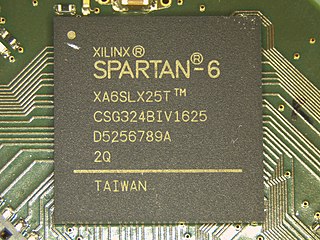Problem Set 5#
Source: DL_P5_Probset.pdf Revision: 2/3/19
1#
Complete Verilog code for a multiplexer-based circuit that performs according to the circuit sketch below.
module P1 (
input A, B, C, D,
output Y);
assign Y =
endmodule
Using minterms:
module P1 (
input A, B, C, D,
output Y);
assign Y =
(A ~& B) & (~C & ~D) |
(~A | ~B) & (~C & D) |
(~A & B) & (C & ~D) |
(A ^ B) & (C & D);
endmodule
Using ternary ?: operator:
module P1 (
input A, B, C, D,
output Y);
assign Y =
C ? (
D ? (A ^ B) : (~A & B)
) : (
D ? (~A | ~B) : (A ~& B)
);
endmodule
A more readable approach compared to the last solution by making the structures (gates and the mux) more clear:
module P1 (
input A, B, C, D,
output Y);
wire [3:0] i;
wire [1:0] s;
assign s[0] = D;
assign s[1] = C;
assign i[0] = (A ~& B);
assign i[1] = (~A | ~B);
assign i[2] = (~A & B);
assign i[3] = (A ^ B);
assign Y =
(s == 2'b00) ? i[0] : (
(s == 2'b01) ? i[1] : (
(s == 2'b10) ? i[2] :
i[3]
)
);
endmodule
Note that a behavioral description using case statement would lead to more readable code, but the solution must be based on an assign statement.
2#
Complete Verilog code to define a circuit that implements the minterm equation:
\( F = \sum m(0, 2, 4, 5, 6) \)
module P2 (
input
output F);
assign F =
endmodule
Without minimizing the circuit and leaving the minimization to the compiler:
module P2 (
input A, B, C,
output F);
assign F =
(~A & ~B & ~C) | // m0
(~A & B & ~C) | // m2
(A & ~B & ~C) | // m4
(A & ~B & C) | // m5
(A & B & ~C); // m6
endmodule
3#
Complete Verilog code to define the circuit shown.
module P3 (
input A, B, C,
output Y);
assign Y =
endmodule
module P3 (
input A, B, C,
output Y);
assign Y =
~(
~(~A & B)
) |
~(
~(B & C)
);
endmodule
4#
Compete Verilog code to define a 3:8 decoder. Include all required Verilog statements,
including the module and endmodule statements.
Using minterms (and thus choosing a more structural approach using only gates) leads to an unreadable code:
module decoder_3to8 (
input [2:0] i,
output [7:0] o);
assign o[0] = ~i[2] & ~i[1] & ~i[0];
assign o[1] = ~i[2] & ~i[1] & i[0];
assign o[2] = ~i[2] & i[1] & ~i[0];
assign o[3] = ~i[2] & i[1] & i[0];
assign o[4] = i[2] & ~i[1] & ~i[0];
assign o[5] = i[2] & ~i[1] & i[0];
assign o[6] = i[2] & i[1] & ~i[0];
assign o[7] = i[2] & i[1] & i[0];
endmodule
A more readable approach is a behavioral description:
module decoder_3to8 (
input [2:0] i,
output reg [7:0] o);
always @ (i)
begin
case (i)
3'd0: o = 8'b0000_0001;
3'd1: o = 8'b0000_0010;
3'd2: o = 8'b0000_0100;
3'd3: o = 8'b0000_1000;
3'd4: o = 8'b0001_0000;
3'd5: o = 8'b0010_0000;
3'd6: o = 8'b0100_0000;
3'd7: o = 8'b1000_0000;
endcase
end
endmodule
A more readable and minimal approach:
module decoder_3to8 (
input [2:0] i,
output [7:0] o);
assign o = 1 << i;
endmodule
For other approaches, refer to B.Baas – decoder design examples
5#
Complete Verilog code to define a circuit that can shift an 8-bit input data value “D” left or right by up to three bits as defined by the 2-bit “A” input, and drive an output bus “R” with the result (note: if A is ‘00’, then the data simply passes through).
module P5 (
input [7:0] D, LnR, [1:0] A,
output [7:0] R);
assign R =
endmodule
Using ?:
module P5 (
input [7:0] D, LnR, [1:0] A,
output [7:0] R);
assign R = LnR ? D >> A : D << A;
endmodule
Using case:
module P5 (
input [7:0] D, // Data input
LnR, // Shift right if high
input [1:0] A, // Shift amount
output [7:0] R);
reg [7:0] R_reg;
always @(*) begin
case(LnR)
0: R_reg = D << A;
1: R_reg = D >> A;
endcase
end
assign R = R_reg;
endmodule
